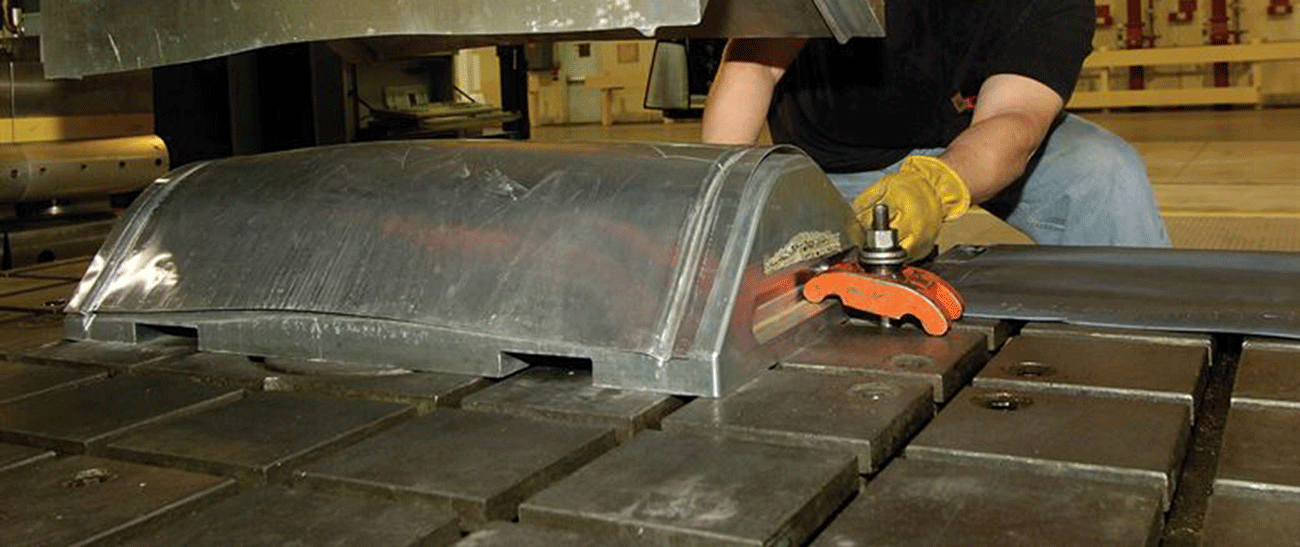

Over the centuries, progress has been forged in the blacksmiths fire. Human beings have been manipulating metal, hammering out metal and forging metal across the millenniums. You would figure as much, since metals make up 2/3 of all elements.
The modern civilization we live in today would not exist if mankind had not learned to shape metal. Some examples of our forged metal products in our modern civilization: Jet Planes, Rockets, Buildings, and Ocean liners.
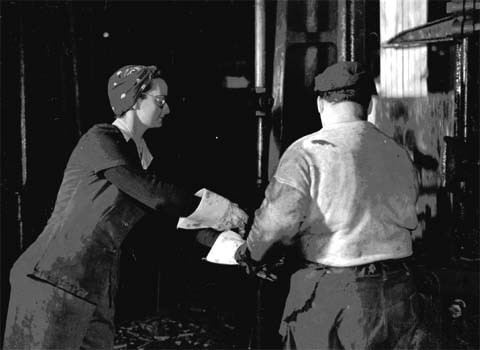 Forging Operations in World War 2 were at an all-time high due to the increased demand for armaments. The above image shows workers forging the M1 Rifle
.
Forging Operations in World War 2 were at an all-time high due to the increased demand for armaments. The above image shows workers forging the M1 Rifle
.
Companies in this industry manufacture formed and stamped metal products. When it comes to reshaping metal by means of stamping and forging, the process involves placing metal into various machines for creating new shapes and parts. Common products made from forging operations are metal light fixtures, porcelain enameled products, household appliance housings, and cooking utensils. Here is a look at some of the machines and processes used in this industry:
Click on a process to expand and learn more.
Power is applied to a slide in order to draw or stamp metal. Hazards occur as the stock metal material is inserted, held, and withdrawn by hand.
Equipment that bends metal: Power Presses, Press Brakes and Tubing Benders.
Power is applied to a slide for the purpose of blanking, drawing, or stamping metal. Hazards occur as the stock metal material is inserted, held, and withdrawn by hand.
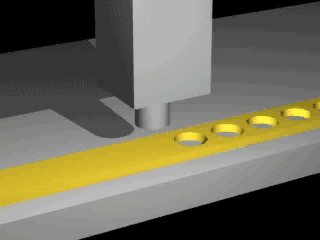
Equipment that punches metal: Power Presses and Iron Workers.
Applying power to a slide or knife in order to trim or shear metal. Hazards occur as the stock metal material is inserted, held, and withdrawn by hand.
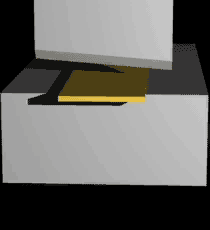
Equipment that shears metal: Mechanically Powered Shears, Hydraulically Powered Shears and Pneumatically Powered Shears.
What often goes unnoticed are the many workers helping forge the modern metal world, often times using their very own brute muscle. The Bureau of Labor Statistics (BLS) shows over 95,000 workers are employed in the forging and stamping metal industry. As in other metal fabrication industries, metalworkers make up the majority of occupations, with over 43,000 workers. One unique occupation making up a significant amount of employment are those cutting and punching metal, with over 13,000 employed. These workers saw metal, cut metal, split metal, bend metal and straighten out metal. These workers will definitely want to check out our Cut Protection page.
Here is a look at the many occupations found in the Forging and Stamping Industry:
Click on an occupation to expand and learn more.Assemble finished products, along with parts and pieces that go into them. There are over 1.8 million people employed across the US in an assembly and fabrication position. You will find this worker assembling bolts, using many different types of tools, and moving heavy parts. There are around 4,900 of these workers in Forging and Stamping.
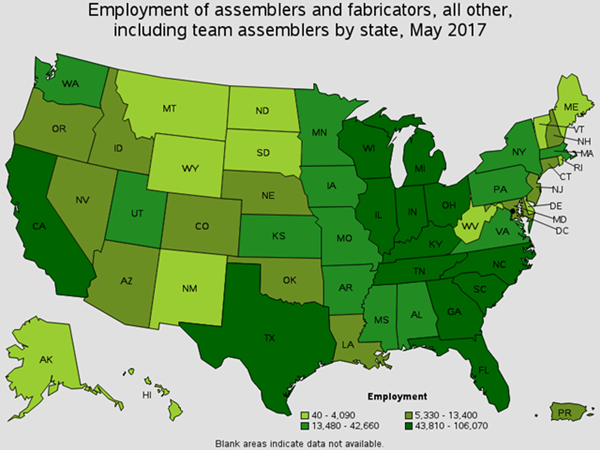
Operate machines that saw, cut, shear, slit, punch, crimp, notch, bend, or straighten metal. There are around 13,500 of this occupation in Forging and Stamping. You will find these workers aligning metal parts and grinding out burrs or sharp edges. This makes cut resistant gloves a high priority for this worker. Common Job titles for this position are Die Setters, Press Operators, Machine Setters and Operators, Press Punch Operators.
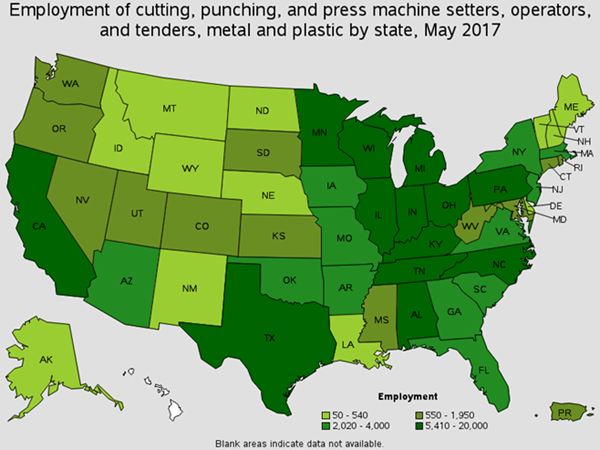
Operate machines to taper, shape and form metal. Around 7% of the workforce falls into this occupation. You will find these workers removing dies, forging hammers and moving metalwork pieces. Common Job titles for this position are Forger, Blacksmith, Hammer Operator, and Forge Press Operator.
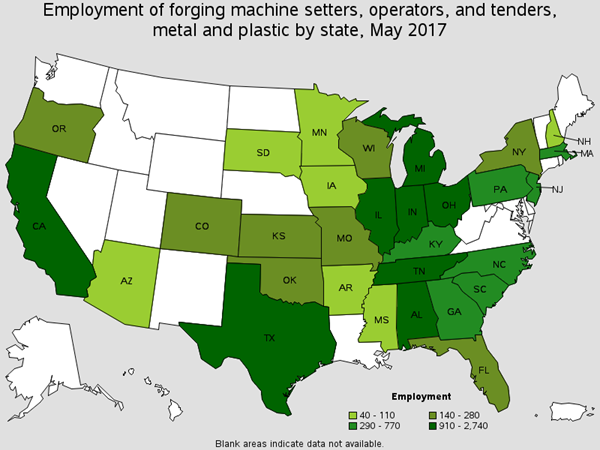
Lubricates machines, changes parts, and performs machinery maintenance. You will find these workers cleaning machines and machine parts. Cleaning solvents, oil parts and metalworking fluids are a definite concern for these workers. Common Job titles for this position are Lubricator, Maintenance Man, and Oiler.
Worker activities include repairing, installing, and adjusting industrial machinery. There are around 1,100 of these workers are in Forging and Stamping. You will find these workers cutting and welding metal to repair broken metal parts. Job titles for this position are Fixer, Industrial and Master Mechanic.
Operate machines designed to cut, shape and form metal. Over 40% of the workforce in this industry falls into this occupation, roughly 43,000.
Keeps and repairs machines, mechanical equipment, or the structure of an establishment in repair. There are around 4,600 of these workers in Forging and Stamping. You will find these workers pipe fitting, repairing equipment, and repairing buildings. Job titles for this position are Maintenance Worker, Maintenance Mechanic, and Facilities Manager.
Operate cutting and forming machines. Roughly, 7.5% of the workforce falls into this occupation, with roughly 15,800 workers. Common Job titles for this position are CNC Machine setter, CNC machinist, and CNC Operator. Exposure to hazardous equipment is always a concern.
Operate forging machines to taper, shape, or form metal. There are around 4,200 of these workers in Forging and Stamping. You will find these workers sharpening edges and corners, along with polishing metal. Common Job titles for this position are Hammer Operator, Forge Press Operator, Blacksmith and Process Technician.
Operate machines that plate, roll and flatten steel. Around 1,400 of this occupation works in the Forging and Stamping Industry. You will find them working around shears, grinders and adjusting machines. Common Job titles for this position are Rolling Mill Operator, Mill Operator and Roll Form Operator.
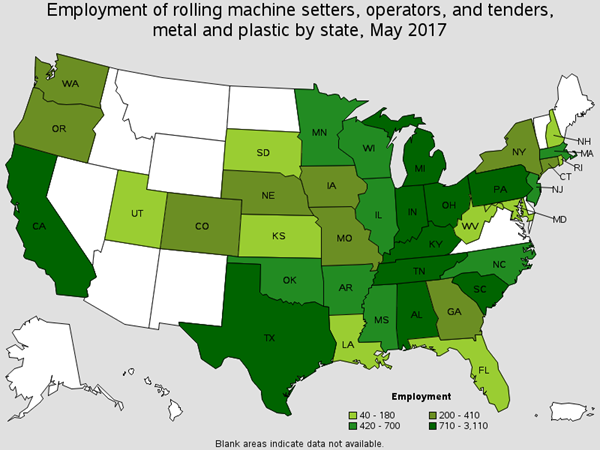
Operate welding, soldering or brazing machines that weld, braze, or heat treat metal products. The Forging and Stamping Industry employs around 3,700 employees. You will find these workers adding material to work pieces, joining metal components, and annealing finished work pieces. Common Job titles for this position are Fabricator, Mig Welder, Spot Welder, Fitter-Welder, and Braze Operators.
Use hand-welding, flame-cutting, hand soldering, and brazing equipment to weld/join metal components, fill holes, indentations, or seams of fabricated metal products. There are around 2,700 of these workers in Forging and Stamping. You will find these workers welding components in flat, vertical or overhead positions. Common Job titles for this position are Maintenance Welder, Mig Welder, and Welder/Fabricator.
Even though this industry does not have a large amount of workers like the Machine Shop industry, the BLS shows the forging and stamping industry as one of the most dangerous. There is a lot of metal these workers must handle, which means cut injuries run on the high side. On average, the industry experiences over 20% more recordable injuries than the metal fabrication industry average. Out of every 100 employees, there are 6 recordable cases, compared to 4.4 for the entire metal manufacturing industry.
Knowing safety is not enough, you must practice it! At MCR Safety, We Protect People! So, we want to give you every tool possible in making sure you practice safety and wear the correct PPE. To back this statement up, we highlight specific hazards causing injuries across this dangerous industry.
Find the right MCR Safety product that protects you against these common hazards.
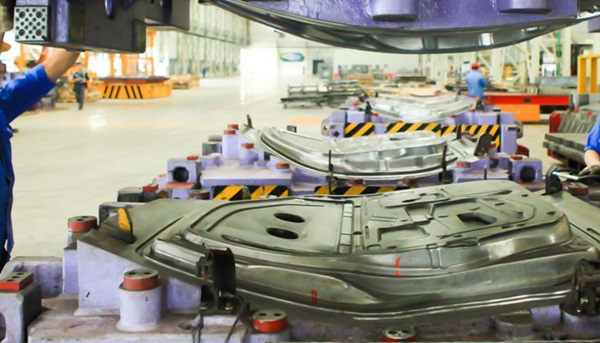
Handling metal can easily cause lacerations to the hand.
Learn More About Heavy Metal Stamping ProtectionCommon Applications
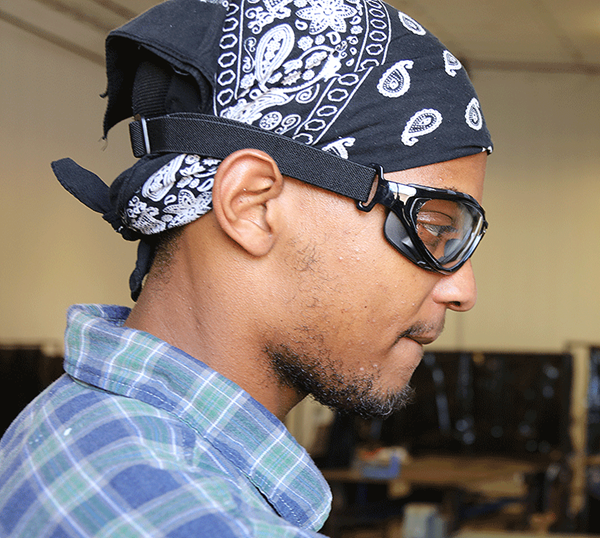
Working around metal will expose you to flying fragments, particles and projectiles.
Learn More About Impaired Vision ProtectionCommon Applications
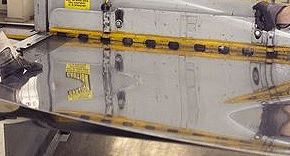
Handling fine gauge metals wreak havoc to a workers hands.
Learn More About Light Metal Stamping ProtectionCommon Applications
.png?h=402&iar=0&mw=600&w=600&hash=818DBB4817367B0060999EA354B1B200)
Metal material can cause a lot of scraped hands, abrasions and cuts. You're going to need some gloves when unloading and transporting metal!
Learn More About Material Handling ProtectionCommon Applications
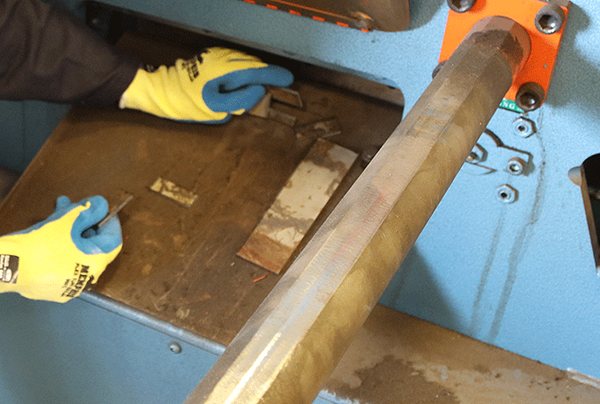
Metals stamping may leave sharp burrs all over metal. Might be smart to wear some high rated ANSI puncture gloves.
Learn More About Puncture Protection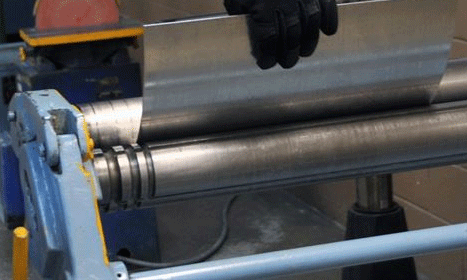
Forging and stamping experiences 20% more recordable injuries. Rolling metal and handling metal are likely reasons for cut injuries.
Learn More About Sharp Objects Protection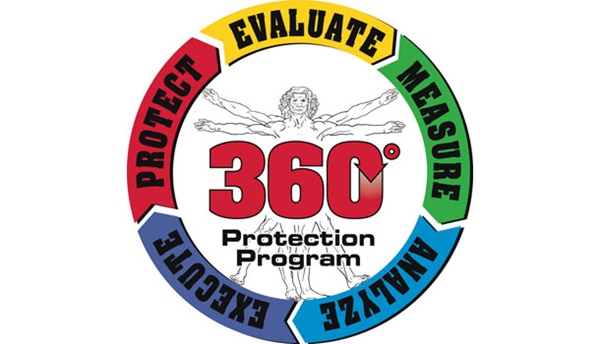
The saying goes, "You don't know what you don't know". Let our 360 team help you know more abut PPE.
Learn More About Lack of Safety Knowledge Protection Why MCR Safety Products?
Why MCR Safety Products? 
MCR Safety manufactures and supplies Personal Protective Equipment (PPE). Simply put, WE PROTECT PEOPLE! We are known world-wide for our extensive product line depth surrounding gloves, glasses, and garments spanning across numerous industries. We offer the total package of safety gear encompassing industrial gloves, safety glasses, protective garments, welding gear, industrial boots, Flame Resistant (FR) gear, face shields, and much more. From a glove standpoint alone, MCR Safety manufacturers and supplies over 1,000 different style gloves. Here are some of the many reasons MCR Safety is your go to source for PPE:
MCR Safety is recognized as a global manufacturer stretching across six countries, with both distribution and manufacturing facilities. Our core competency and specialty is manufacturing and supplying protective gloves, glasses, and garments. The information shown and provided on MCR Safety’s website, its safety articles, industry resource pages, highlighted hazards and safety equipment should be used only as a general reference tool and guide. The end user is solely responsible for determining the suitability of any product selection for a particular application. MCR Safety makes no guarantee or warranty (expressed or implied) of our products’ performance or protection for particular applications.